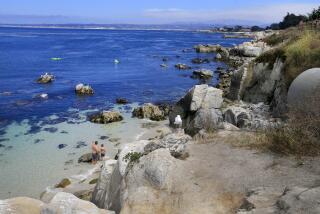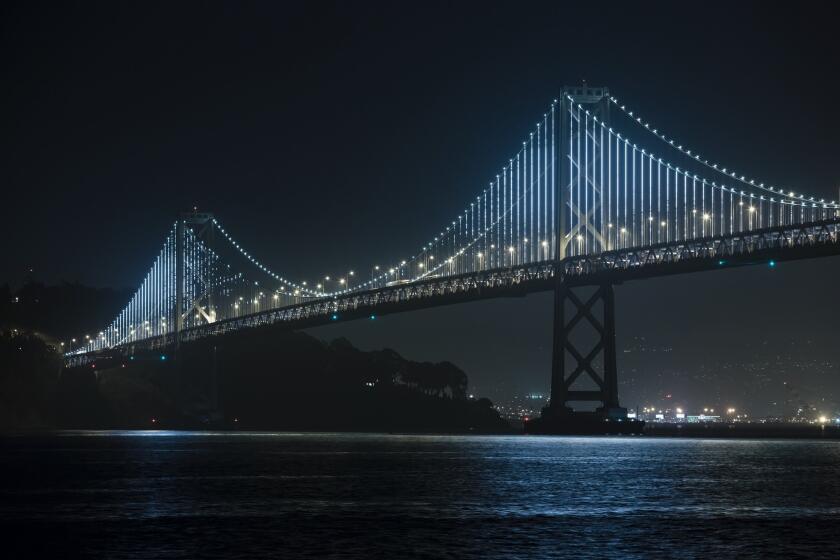PG&E; plan to conduct underwater seismic tests is shot down

The California Coastal Commission, concerned about harm to fish and marine mammals, on Wednesday scuttled Pacific Gas & Electric Co.’s plan to conduct seismic surveys with underwater air cannons offshore of the Diablo Canyon nuclear power plant.
The commission’s 10-0 vote followed a marathon hearing in the Santa Monica Civic Auditorium. Commission staff and environmentalists debated utility officials throughout the day over the potential damage the sonic blasts would cause near scenic Morro Bay on the Cental California coast.
The tests would have potentially deadly effects on threatened and endangered marine mammals, including whales, sea otters and 2,000 harbor porpoises that could be driven out of their Morro Bay foraging grounds, staff members said.
The commission also questioned whether the surveys were necessary.
“These tests are not going to do us any good in terms of protecting the public welfare — and the environmental impacts of this project were understated,” commissioner Jana Zimmer said, drawing cheers and smiles from hundreds of environmentalists and commercial fishermen, many of them carrying signs that said, “Make Love, Not Noise,” and “Seismic Matters.”
PG&E; had requested a Coastal Commission permit to begin the high-energy surveys of 130 square miles of ocean. A 235-foot vessel was to tow a 1/4-mile-wide array of submerged, 250-decibel air cannons that would discharge every 15 seconds, night and day, for 17 days.
The goal was to produce three-dimensional images of fault lines to better understand the seismic safety of the plant. Diablo Canyon generates enough energy to meet the needs of more than 3 million Northern and Central Californians.
PG&E; spokesman Blair Jones said the utility’s plan had been guided by “seismic experts, state and federal agencies and our commitment to performing the work in an environmentally responsible manner.” The utility will review the decision before deciding on its next step, Jones said.
Mark Krausse, PG&E;’s director of state agency relations, reminded the panel that the state Lands Commission and the California Public Utilities Commission had determined that the $64-million project would have “less than significant long-term impacts” on marine life.
Krausse had said PG&E; would compensate commercial fishing operations for any losses. He also said the utility would spend $8 million on a monitoring program that would station dozens of observers on shore, onboard vessels and in airplanes overhead to look for injured animals and carcasses. “If we come within 6/10ths of a mile of any marine mammal, the ship has to be shut down,” Krausse said.
But the commissioners were not convinced that the benefits outweighed the risks.
Commission Chair Mary Shallenberger said the state Lands Commission and the state Public Utilities Commission “should be investing money instead on how to get nuclear power plants off the coast.”
The plan had been strongly resisted by the fishing industry and environmental groups, including the Sierra Club, the Natural Resources Defense Council and the Surfrider Foundation. On Wednesday, representatives of those and other groups turned out at the commission meeting and, in personal testimonies, predicted lethal consequences for marine life.
Environmental teacher Lindsey Jurca summed up many of the statements when she told the panel: “A nuclear power plant on a fault line is dangerous. Period.”
More to Read
Start your day right
Sign up for Essential California for news, features and recommendations from the L.A. Times and beyond in your inbox six days a week.
You may occasionally receive promotional content from the Los Angeles Times.







